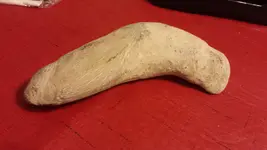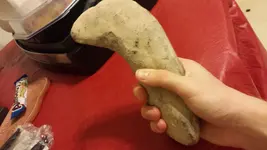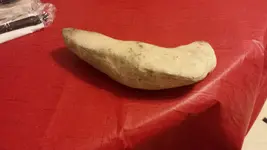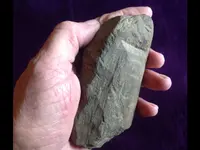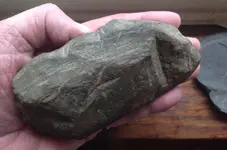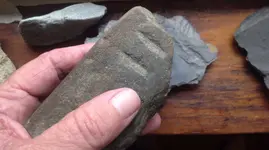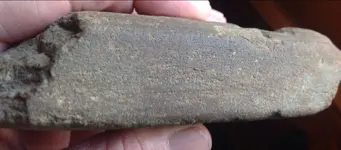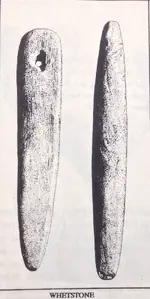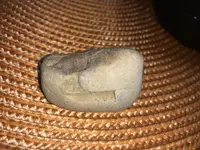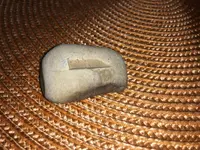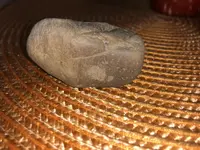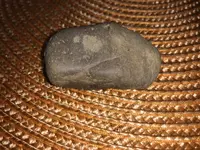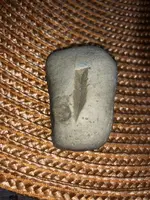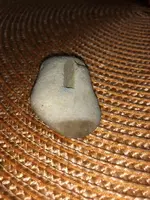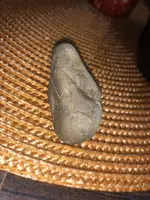camsterman48 you could take that and get it under greater magnification maybe under a microscope and see if there's some wear or abrasion which would indicate use. That's an interesting rock that Charl posted, but I don't think they're tool sharpening marks. That third pic, I believe those marks were placed there by man for some reason, but not to sharpen a tool. I see a lot of what archaeologists call tool sharpening marks, and they have a little different look, but could be. In this part of the country there was no need to carry a rock around to sharpen your awl, as they just used the rocks already in place in the landscape.
It must be the case that a good stone to sharpen can be found rather easily. But there is a class of artifacts known as abrading stones.
"They have simple shapes produced by use, not by design. They usually appear as pebbles in various shapes with smooth facets produced by wear from rubbing, or with irregular grooves, thought to have been used for sharpening bone awls." (A Handbook of Indian Artifacts from Southern New England")
The various abrading stones includes whetstones, shaft abraders, sinewstones, and rubbing stones.
The sandstone sharpening stone I posted assumed most of it's present shape directly from usage. It was not used just once, or for just one purpose. So, it would have been retained as a tool of sorts, and not just picked up once, used, and then tossed down again. Anymore then a celt was used once and discarded. In other words, they did retain some of these stones to use on a regular basis. Below is an image of that sandstone block. Demonstrating that it was also used as a whetstone. The surface seen was perfect for sharpening bits. The grooves seen in the earlier photos are interpreted as being the result of sharpening bone. But, grinding points could also be accomplished using a stone like this, and those grooves can also result from grinding the base of a point for instance.
Of course I can't speak where Texas artifact classes are concerned. But here in New England we do recognize several types of "abrading stones", at least some of which were retained and used repeatedly. In the case of whetstones, they are often fashioned from scratch, making them a more formal type of artifact compared to other abrading stones. But in the case of this sandstone block, it shows usage as a multipurpose abrading stone. And being sandstone, it's a natural sandpaper anyway....
I don't make anything of the shape of the rock in this thread. I don't buy into the "fits perfect in hand" theory. I don't know what created the grooves seen in the first photo. But I should think, if man made, rubbing something on that rock would produce them. If the texture of the rock is good for abrading, it might have been retained for use more then once. But again, I'm not in a position to question your knowledge of what natives did in Texas where abrading stones are concerned. If they used axes at all, would they have not used whetstones at least??
Whetstones are probably the only type of abrading stone that were often fashioned from scratch.....
